

| Cruise Region :
Europe Mediterranean Sea |
| Company Category : Luxury |
| Company name : Regent Seven Seas Cruises |
| Ship name : Seven Seas Voyager |
| Journey Start Date : Fri 28 May 2021 |
| Journey End Date : Sat 12 Jun 2021 |
| Port start : Nazareth / Israel |
| Port end : Rome (Civitavecchia) / Italy |
| Count Nights : 15 nights |
| Day | Port | Date | Arrival | Departure |
|---|---|---|---|---|
| 1 | Nazareth / Israel | Fri 28 May | ||
| 2 | Nazareth / Israel | Sat 29 May | 22:00 | |
| 3 | Bethlehem / Israel | Sun 30 May | 06:00 | 20:00 |
| 4 | Cyrene / Cyprus | Mon 31 May | 10:00 | 17:00 |
| 5 | Rhodes / Greece | Tue 01 Jun | 11:00 | 20:00 |
| 6 | Kusadasi (Ephesus) / Turkey | Wed 02 Jun | 08:00 | 20:00 |
| 7 | Fr. BOZJAADDA / Turkey | Thu 03 Jun | 09:00 | 18:00 |
| 8 | Istanbul / Turkey | Fri 04 Jun | 08:00 | |
| 9 | Istanbul / Turkey | Sat 05 Jun | 18:00 | |
| 10 | Kavala / Greece | Sun 06 Jun | 11:00 | 20:00 |
| 11 | Mykonos / Greece | Mon 07 Jun | 10:00 | 20:00 |
| 12 | Santorini, Cyclades / Greece | Tue 08 Jun | 08:00 | 20:00 |
| 13 | Day at sea / Sea | Wed 09 Jun | ||
| 14 | Sicily Palermo / Italy | Thu 10 Jun | 08:00 | 18:00 |
| 15 | Sorrento, Capri / Italy | Fri 11 Jun | 07:00 | 18:00 |
| 16 | Rome (Civitavecchia) / Italy | Sat 12 Jun | 08:00 |

Nazareth is the capital and the largest city in the Northern District of Israel. Nazareth is known as "the Arab capital of Israel". In 2017 its population was 76,551. The inhabitants are predominantly Arab citizens of Israel, of whom 69% are Muslim and 30.9% Christian. Nazareth Illit (lit. "Upper Nazareth"), declared a separate city in June 1974, is built alongside old Nazareth, and had a Jewish population of 40,312 in 2014.
In the New Testament, the town is described as the childhood home of Jesus, and as such is a center of Christian pilgrimage, with many shrines commemorating biblical events.

Nazareth is the capital and the largest city in the Northern District of Israel. Nazareth is known as "the Arab capital of Israel". In 2017 its population was 76,551. The inhabitants are predominantly Arab citizens of Israel, of whom 69% are Muslim and 30.9% Christian. Nazareth Illit (lit. "Upper Nazareth"), declared a separate city in June 1974, is built alongside old Nazareth, and had a Jewish population of 40,312 in 2014.
In the New Testament, the town is described as the childhood home of Jesus, and as such is a center of Christian pilgrimage, with many shrines commemorating biblical events.


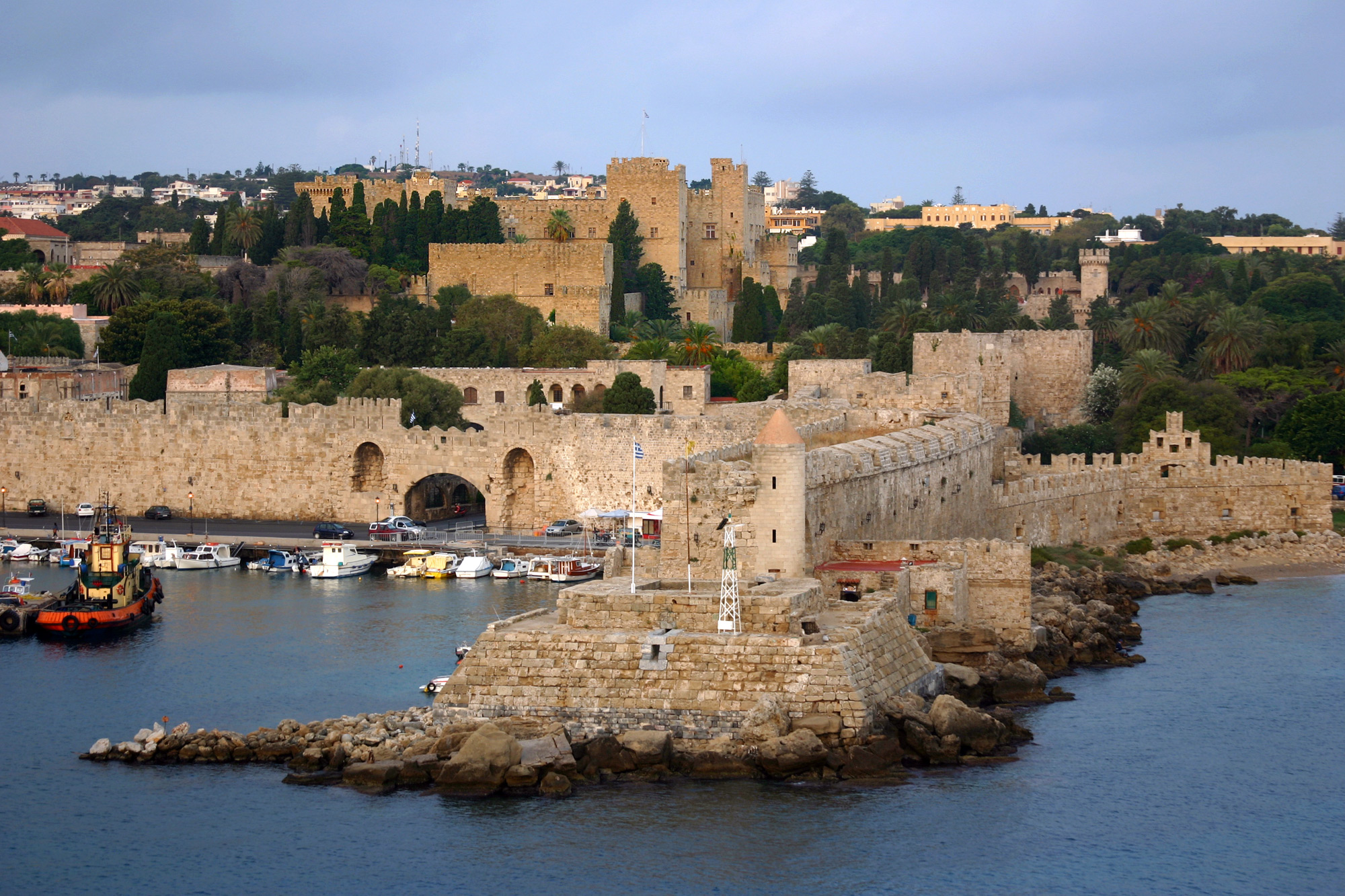
Rhodes is the largest of the Dodecanese islands of Greece and is also the island group's historical capital. Administratively the island forms a separate municipality within the Rhodes regional unit, which is part of the South Aegean administrative region. The principal town of the island and seat of the municipality is Rhodes. The city of Rhodes had 50,636 inhabitants in 2011. It is located northeast of Crete, southeast of Athens and just off the Anatolian coast of Turkey. Rhodes' nickname is The island of the Knights, named after the Knights of Saint John of Jerusalem, who once conquered the land.
Historically, Rhodes was famous worldwide for the Colossus of Rhodes, one of the Seven Wonders of the Ancient World. The Medieval Old Town of the City of Rhodes has been declared a World Heritage Site. Today, it is one of the most popular tourist destinations in Europe. The name of the U.S. state of Rhode Island is thought to be based on this island.

Kuşadası is a resort town on Turkey's Aegean coast, and the center of the seaside district of the same name within Aydın Province. Kuşadası is 95 km (59 mi) south of İzmir, and 71 km (44 mi) from Aydın. The municipality's primary industry is tourism.

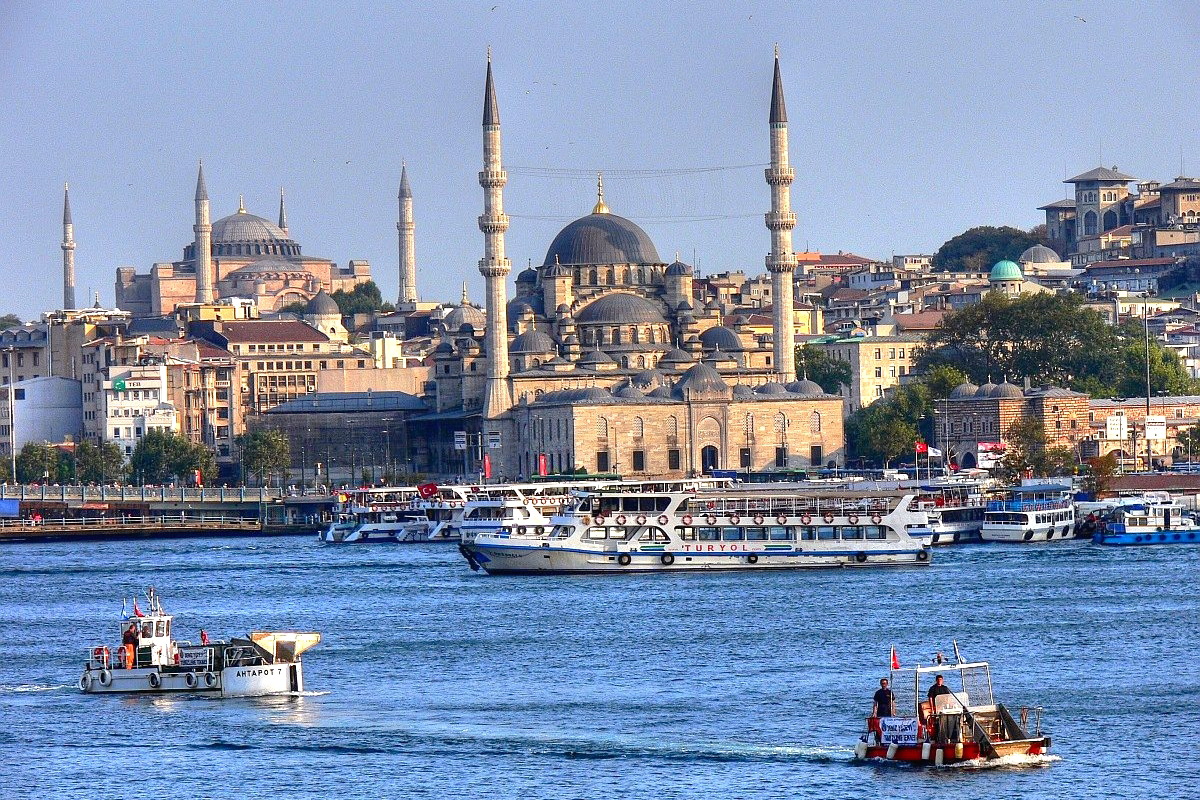
Стамбул — самый крупный город Турции, расположился на берегах залива Босфор. До 1930 года город имел название Константинополь и был столицей таких великих империй как: Римская, Византийская, Литинская и Османская. На территории города и в его окрестностях сохранились постройки древних цивилизаций, исторических памятников архитектуры и другие важные достопримечательности.
Сегодня Стамбул является важным культурным, торговым и промышленным центром страны. Туристы приезжают сюда не только чтобы посмотреть на храмы, дворцы, парковые ансамбли, музеи и крепости, но и для того чтобы скупится на известных турецких рынках и базарах, которые известны по всему миру. Здесь можно приобрести хорошие поделки известных брендов, пестрые кальяны, душистые специи, ювелирные изделия и предметы старины, а также всласть поторговаться.

Стамбул — самый крупный город Турции, расположился на берегах залива Босфор. До 1930 года город имел название Константинополь и был столицей таких великих империй как: Римская, Византийская, Литинская и Османская. На территории города и в его окрестностях сохранились постройки древних цивилизаций, исторических памятников архитектуры и другие важные достопримечательности.
Сегодня Стамбул является важным культурным, торговым и промышленным центром страны. Туристы приезжают сюда не только чтобы посмотреть на храмы, дворцы, парковые ансамбли, музеи и крепости, но и для того чтобы скупится на известных турецких рынках и базарах, которые известны по всему миру. Здесь можно приобрести хорошие поделки известных брендов, пестрые кальяны, душистые специи, ювелирные изделия и предметы старины, а также всласть поторговаться.

Кавала - крупный живописный греческий город на берегу Эгейского моря. С высоты птичьего полета кажется, что синие воды обрамляет мраморный амфитеатр - так расположились уютные домики жителей Кавалы. Природная красота, архитектурное изящество и дошедшая до наших дней самобытная культура - все это ждет вас в этом удивительном уголке на родине Олимпийских игр.
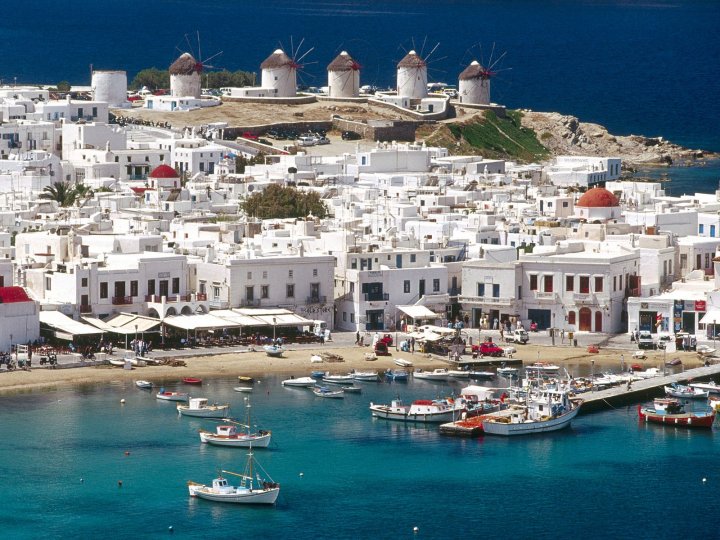
Mykonos is a Greek island, part of the Cyclades, lying between Tinos, Syros, Paros and Naxos. The island spans an area of 85.5 square kilometres (33.0 sq mi) and rises to an elevation of 341 metres (1,119 feet) at its highest point. There are 10,134 inhabitants (2011 census), most of whom live in the largest town, Mykonos, which lies on the west coast. The town is also known as Chora (i.e. the Town in Greek, following the common practice in Greece when the name of the island itself is the same as the name of the principal town).
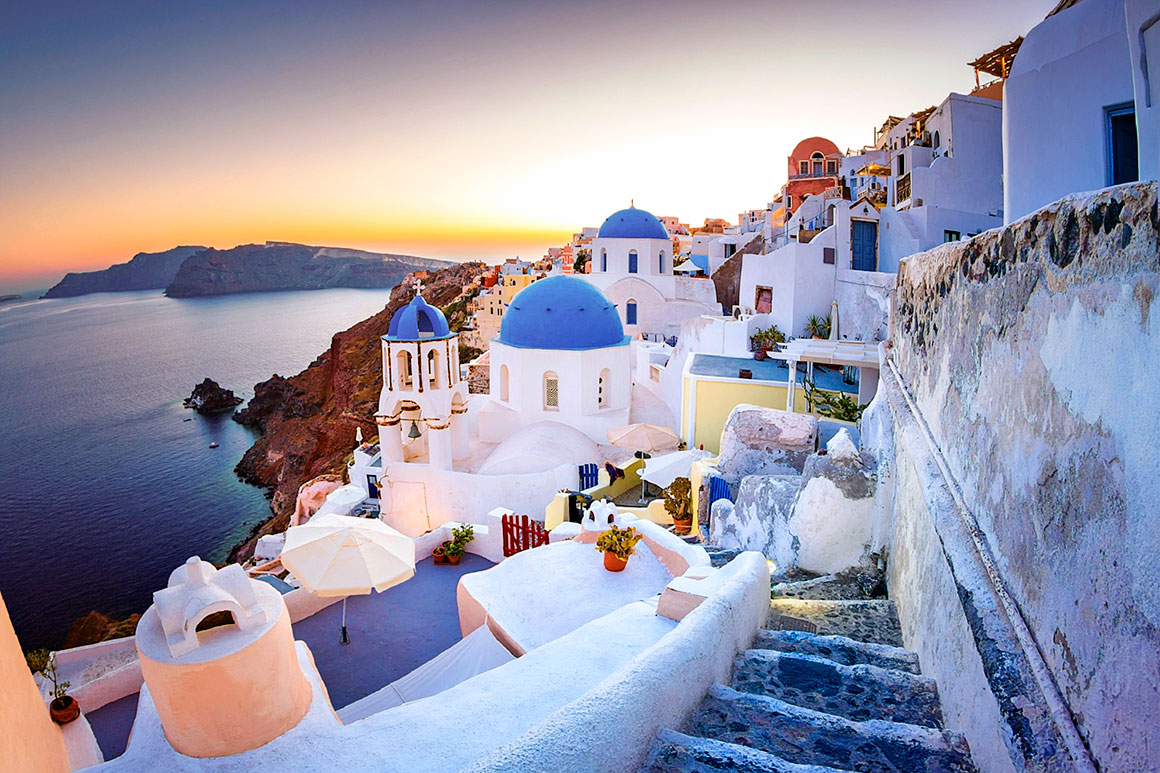
Santorini, classically Thera, and officially Thira, is an island in the southern Aegean Sea, about 200 km (120 mi) southeast of Greece's mainland. It is the largest island of a small, circular archipelago, which bears the same name and is the remnant of a volcanic caldera. It forms the southernmost member of the Cyclades group of islands, with an area of approximately 73 km2 (28 sq mi) and a 2011 census population of 15,550. The municipality of Santorini includes the inhabited islands of Santorini and Therasia and the uninhabited islands of Nea Kameni, Palaia Kameni, Aspronisi, and Christiana. The total land area is 90.623 km2 (34.990 sq mi).Santorini is part of the Thira regional unit.
The island was the site of one of the largest volcanic eruptions in recorded history: the Minoan eruption(sometimes called the Thera eruption), which occurred about 3,600 years ago at the height of the Minoan civilization. The eruption left a large caldera surrounded by volcanic ash deposits hundreds of metres deep. It may have led indirectly to the collapse of the Minoan civilization on the island of Crete, 110 km (68 mi) to the south, through a gigantic tsunami. Another popular theory holds that the Thera eruption is the source of the legend of Atlantis.
It is the most active volcanic centre in the South Aegean Volcanic Arc, though what remains today is chiefly a water-filled caldera. The volcanic arc is approximately 500 km (310 mi) long and 20 to 40 km (12 to 25 mi) wide. The region first became volcanically active around 3–4 million years ago[citation needed], though volcanism on Thera began around 2 million years ago with the extrusion of dacitic lavas from vents around the Akrotiri.


Sicily is the largest island in the Mediterranean Sea and one of the 20 regions of Italy. It is one of the five Italian autonomous regions, in Southern Italy along with surrounding minor islands, officially referred to as Regione Siciliana.
Sicily is located in the central Mediterranean Sea, south of the Italian Peninsula, from which it is separated by the narrow Strait of Messina. Its most prominent landmark is Mount Etna, the tallest active volcano in Europe, and one of the most active in the world, currently 3,329 m (10,922 ft) high. The island has a typical Mediterranean climate.
The earliest archaeological evidence of human activity on the island dates from as early as 12,000 BC. By around 750 BC, Sicily had three Phoenician and a dozen Greek colonies and, for the next 600 years, it was the site of the Sicilian Wars and the Punic Wars. After the fall of the Roman Empire in the 5th century AD, Sicily was ruled during the Early Middle Ages by the Vandals, the Ostrogoths, the Byzantine Empire, and the Emirate of Sicily. The Norman conquest of southern Italy led to the creation of the Kingdom of Sicily, which was subsequently ruled by the Hohenstaufen, the Capetian House of Anjou, Spain, and the House of Habsburg. It was finally unified under the House of Bourbon with the Kingdom of Naples as the Kingdom of the Two Sicilies. It became part of Italy in 1860 following the Expedition of the Thousand, a revolt led by Giuseppe Garibaldi during the Italian unification, and a plebiscite. Sicily was given special status as an autonomous region on 15th May 1946, 18 days before the Italian constitutional referendum of 1946. Albeit, much of the autonomy still remains unapplied, especially financial autonomy, because the autonomy-activating laws have been deferred to be approved by the parithetic committee (50% Italian State, 50% Regione Siciliana), since 1946.
Sicily has a rich and unique culture, especially with regard to the arts, music, literature, cuisine, and architecture. It is also home to important archaeological and ancient sites, such as the Necropolis of Pantalica, the Valley of the Temples, Erice and Selinunte.
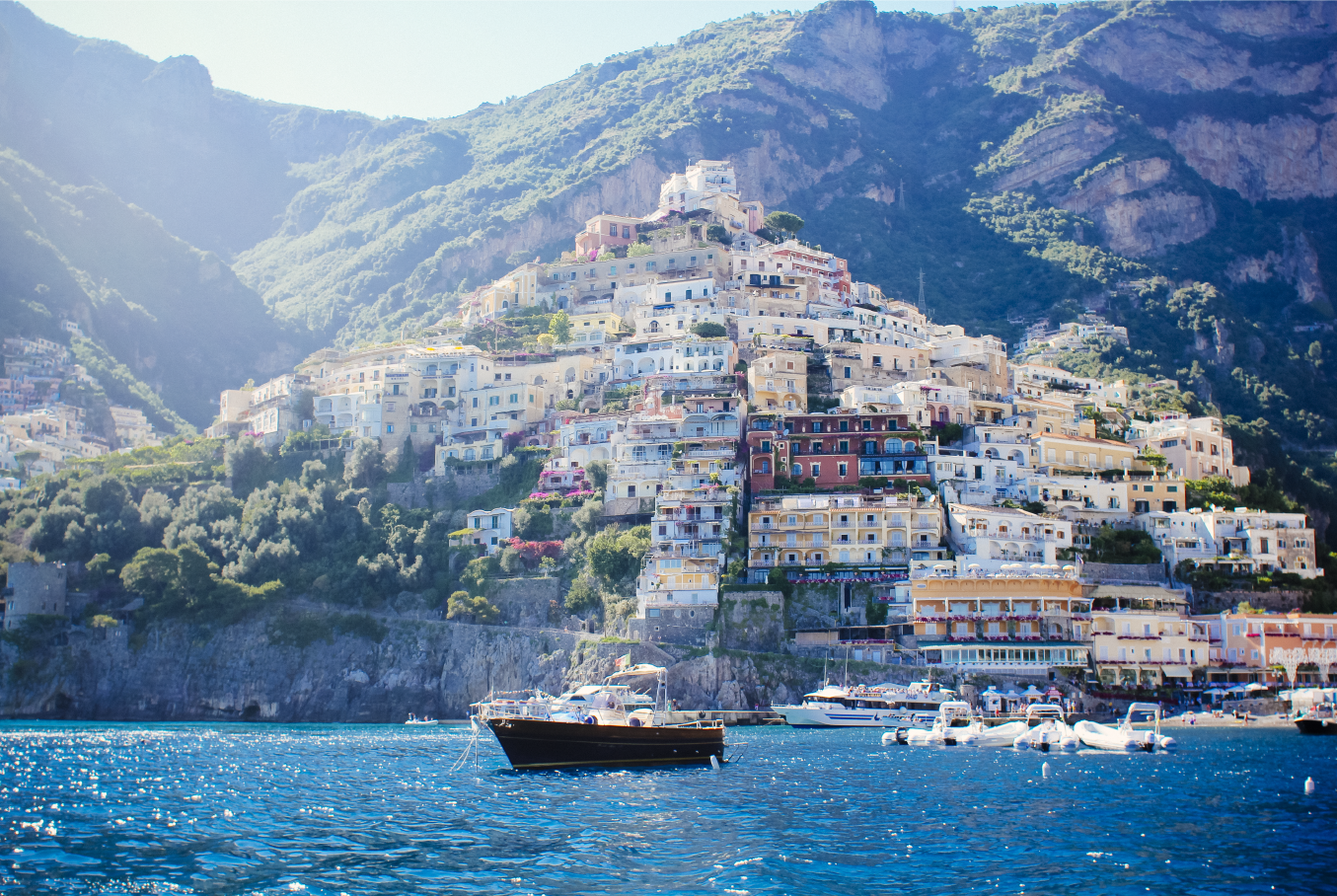
Sorrento is a town overlooking the Bay of Naples in Southern Italy. A popular tourist destination due to its variety of small antique shops and location on the Amalfi Coast, it can be reached easily from Naples and Pompeii as it is at the south-eastern end of the Circumvesuviana rail line. The town is most commonly known for its small shops selling an arrangement of ceramics, lacework and marquetry (woodwork).
The Sorrentine Peninsula has views of Naples, Vesuvius and the Isle of Capri. The Amalfi Drive, connecting Sorrento and Amalfi, is a narrow road that threads along the high cliffs above the Tyrrhenian Sea.
Ferries and hydrofoils connect the town to Naples, Amalfi, Positano, Capri and Ischia. Sorrento's sea cliffs and luxury hotels have attracted celebrities including Enrico Caruso and Luciano Pavarotti.
Limoncello, a digestif made from lemon rinds, alcohol, water and sugar, is produced in Sorrento. Other agricultural production includes citrus fruit, wine, nuts and olives.

Rome is the capital city and a special comune of Italy (named Comune di Roma Capitale). Rome also serves as the capital of the Lazio region. With 2,872,800 residents in 1,285 km2(496.1 sq mi), it is also the country's most populated comune. It is the fourth-most populous city in the European Union by population within city limits. It is the centre of the Metropolitan City of Rome, which has a population of 4,355,725 residents, thus making it the most populous metropolitan city in Italy. Rome is located in the central-western portion of the Italian Peninsula, within Lazio (Latium), along the shores of the Tiber. The Vatican City (the smallest country in the world) is an independent country inside the city boundaries of Rome, the only existing example of a country within a city: for this reason Rome has been often defined as capital of two states.
Rome's history spans 28 centuries. While Roman mythology dates the founding of Rome at around 753 BC, the site has been inhabited for much longer, making it one of the oldest continuously occupied sites in Europe. The city's early population originated from a mix of Latins, Etruscans, and Sabines. Eventually, the city successively became the capital of the Roman Kingdom, the Roman Republic and the Roman Empire, and is regarded as the birthplace of Western civilization and by some as the first ever metropolis. It was first called The Eternal City (Latin: Urbs Aeterna; Italian: La Città Eterna) by the Roman poet Tibullus in the 1st century BC, and the expression was also taken up by Ovid, Virgil, and Livy. Rome is also called the "Caput Mundi" (Capital of the World). After the fall of the Western Empire, which marked the beginning of the Middle Ages, Rome slowly fell under the political control of the Papacy, which had settled in the city since the 1st century AD, until in the 8th century it became the capital of the Papal States, which lasted until 1870. Beginning with the Renaissance, almost all the popes since Nicholas V (1447–1455) pursued over four hundred years a coherent architectural and urban programme aimed at making the city the artistic and cultural centre of the world. In this way, Rome became first one of the major centres of the Italian Renaissance, and then the birthplace of both the Baroque style and Neoclassicism. Famous artists, painters, sculptors and architects made Rome the centre of their activity, creating masterpieces throughout the city. In 1871, Rome became the capital of the Kingdom of Italy, which, in 1946, became the Italian Republic.
Rome has the status of a global city. In 2016, Rome ranked as the 14th-most-visited city in the world, 3rd most visited in the European Union, and the most popular tourist attraction in Italy. Its historic centre is listed by UNESCO as a World Heritage Site. The famous Vatican Museums are among the world's most visited museums while the Colosseum was the most popular tourist attraction in world with 7.4 million visitors in 2018. Host city for the 1960 Summer Olympics, Rome is the seat of several specialized agencies of the United Nations, such as the Food and Agriculture Organization (FAO), the World Food Programme (WFP) and the International Fund for Agricultural Development (IFAD). The city also hosts the Secretariat of the Parliamentary Assembly of the Union for the Mediterranean (UfM) as well as the headquarters of many international business companies such as Eni, Enel, TIM, Leonardo S.p.A., and national and international banks such as Unicredit and BNL. Its business district, called EUR, is the base of many companies involved in the oil industry, the pharmaceutical industry, and financial services. Rome is also an important fashion and design centre thanks to renowned international brands centered in the city. Rome's Cinecittà Studios have been the set of many Academy Award–winning movies.